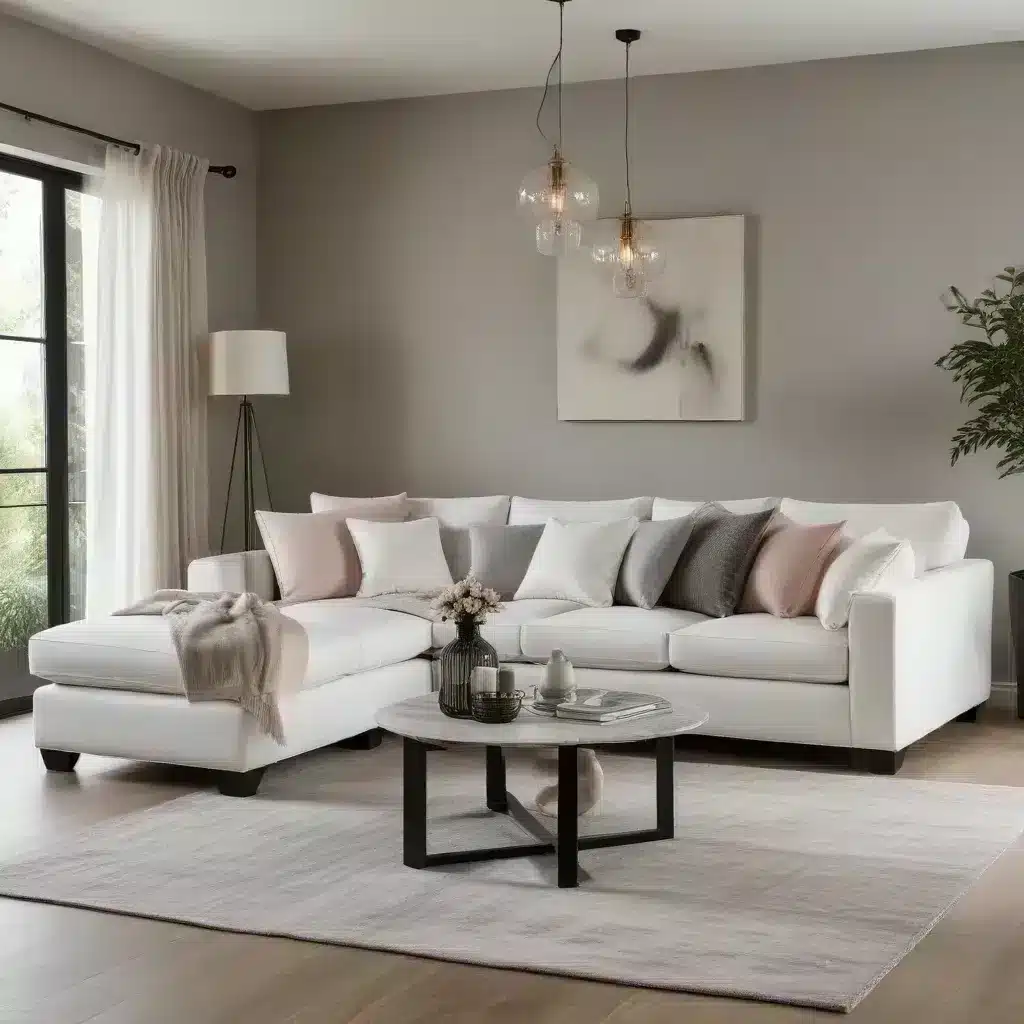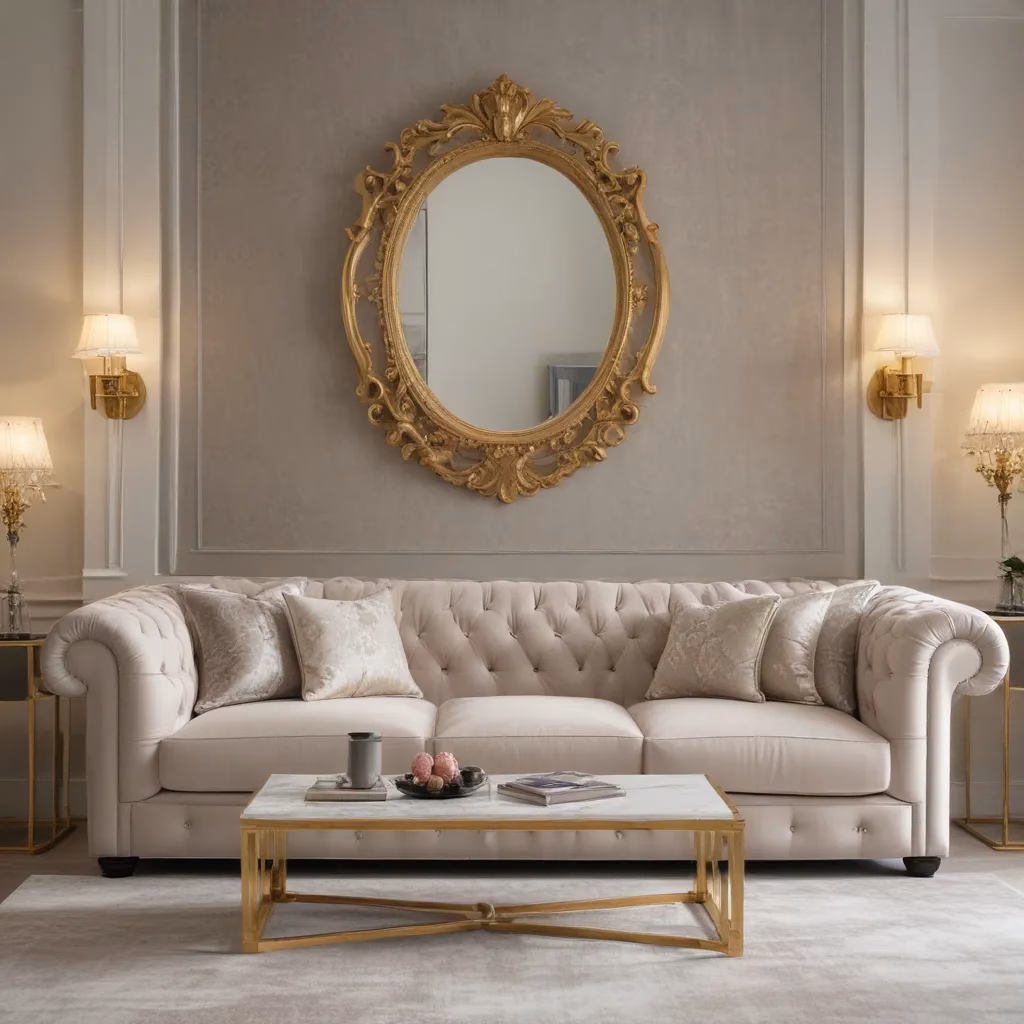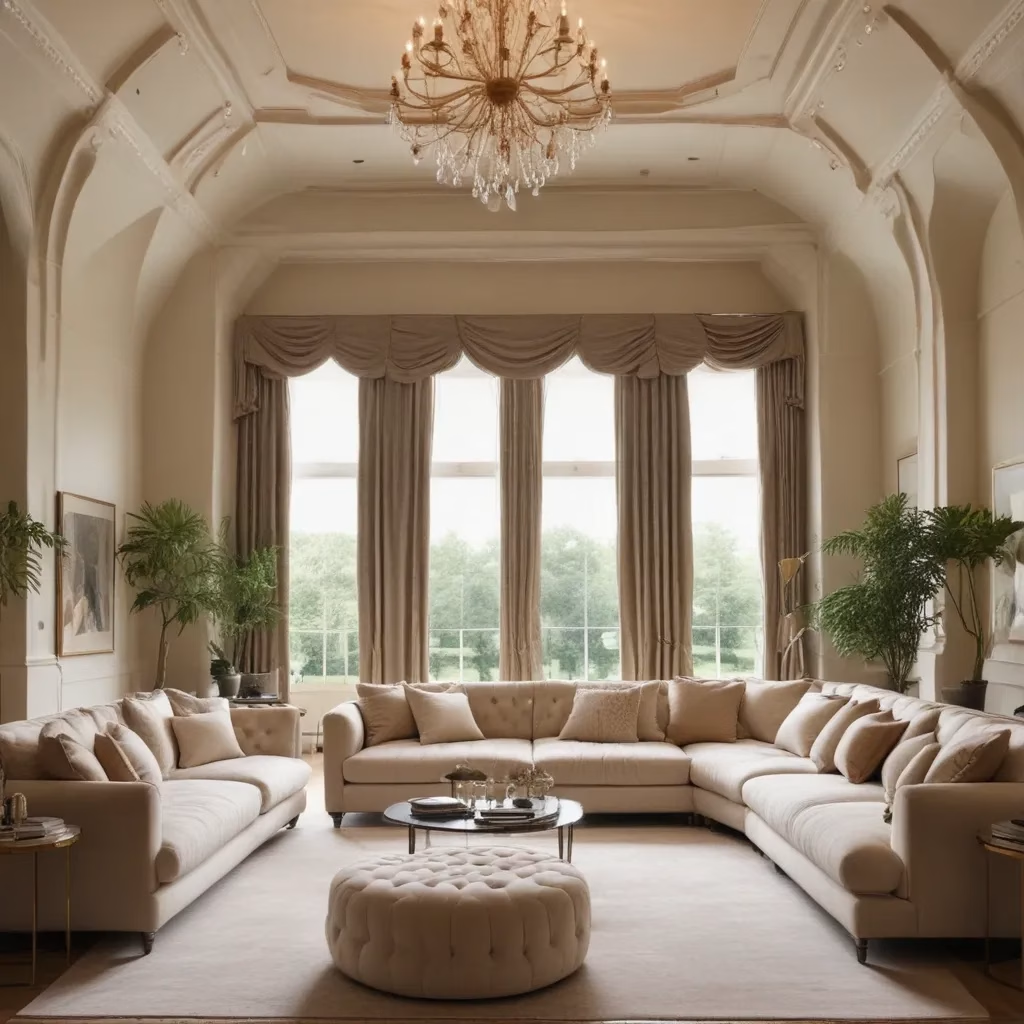
The Art of Selecting the Perfect Corner Sofa
As a furniture specialist with years of experience, I’ve seen countless living rooms transformed by the right corner sofa. These versatile pieces are more than just seating; they’re the heart of your living space, offering both comfort and style. When choosing a corner sofa, there are several factors to consider.
Firstly, size matters. I always advise my clients to measure their space carefully. It’s not just about the dimensions of the room, but also considering traffic flow and how the sofa will interact with other furniture pieces. I once worked with a client who fell in love with a grand L-shaped sofa, only to realize it would block access to their patio doors. By taking precise measurements and creating a floor plan, we were able to find a perfectly proportioned alternative that enhanced the room without overwhelming it.
Material selection is another crucial aspect. In my experience, the choice of upholstery can make or break a sofa’s longevity and appearance. For busy households with children or pets, I often recommend durable, stain-resistant fabrics like microfiber or leather. These materials not only withstand daily wear and tear but also clean up easily, maintaining their appearance for years to come.
Color is where personal style really shines through. While neutral tones like greys and beiges remain popular for their versatility, I’ve noticed a growing trend towards bolder hues. A rich navy or forest green can add depth and character to a room. However, if you’re hesitant about committing to a strong color, consider using vibrant throw pillows or a colorful throw blanket to add pops of color to a neutral base.
Maximizing Comfort: The Science of Sofa Design
When it comes to comfort, not all sofas are created equal. The internal structure and cushioning play a significant role in how a sofa feels and how well it maintains its shape over time. In my years of experience, I’ve learned to appreciate the nuances of sofa construction that contribute to ultimate comfort.
High-density foam is a staple in quality sofas, providing firm support that maintains its shape. However, for that extra layer of luxury, many high-end sofas incorporate memory foam or down feather toppers. These materials contour to your body, creating a cozy nest that’s perfect for long Netflix marathons or afternoon naps.
The frame of the sofa is its backbone, quite literally. Hardwood frames, particularly those made from kiln-dried wood, offer superior durability and resistance to warping. I’ve seen sofas with well-constructed hardwood frames last for decades, becoming cherished family heirlooms.
Suspension systems are often overlooked but are crucial for long-term comfort. Eight-way hand-tied springs are considered the gold standard, providing even support and preventing sagging. However, high-quality sinuous spring systems can also offer excellent comfort at a more accessible price point.
The Evolution of Corner Sofa Designs
Over the years, I’ve witnessed a fascinating evolution in corner sofa designs. Gone are the days of bulky, overstuffed sectionals that dominated living rooms. Today’s corner sofas are sleek, modular, and highly customizable.
One trend I’m particularly excited about is the integration of technology into sofa design. USB ports and wireless charging pads built into armrests or side tables have become increasingly common, catering to our connected lifestyles. I recently worked with a tech-savvy family to select a sofa with integrated speakers and smart home controls, allowing them to adjust lighting and play music directly from their seating area.
Modular designs have also gained popularity, offering flexibility for changing needs and room layouts. These sofas come in separate pieces that can be rearranged to create different configurations. I’ve had clients who started with a simple L-shape and later added pieces to create a larger U-shaped arrangement as their family grew.
Sustainability is another area where corner sofa design has made significant strides. Eco-friendly materials like organic cotton, recycled polyester, and FSC-certified wood are becoming more prevalent. I’ve noticed an increasing number of clients seeking out sofas made with environmentally conscious practices, reflecting a broader shift towards sustainable living.
Caring for Your Corner Sofa: Maintenance Tips from a Pro
As someone who’s seen the best and worst in sofa care, I can’t stress enough the importance of proper maintenance. A well-cared-for sofa not only looks better but also lasts longer, saving you money in the long run.
Regular vacuuming is the foundation of good sofa care. I recommend using the upholstery attachment to gently remove dust and debris at least once a week. For leather sofas, a soft brush attachment works best to avoid scratching the surface.
Spills are inevitable, but how you handle them can make all the difference. The key is to act quickly. Blot, don’t rub, to avoid spreading the stain or pushing it deeper into the fabric. For water-based spills on fabric upholstery, a mixture of mild soap and warm water often does the trick. However, for oil-based stains or delicate fabrics, it’s best to consult a professional cleaner.
Rotating cushions is another simple yet effective way to extend the life of your sofa. This helps distribute wear evenly, preventing premature sagging or fading. I suggest rotating cushions monthly, or even weekly for heavily used sofas.
For leather sofas, conditioning is crucial to prevent drying and cracking. I recommend using a high-quality leather conditioner every 6-12 months, depending on the sofa’s exposure to sunlight and heat.
Arranging Your Living Space Around a Corner Sofa
The placement of your corner sofa can dramatically impact the flow and feel of your living room. In my experience, there are a few key principles to keep in mind when arranging furniture around a corner sofa.
Firstly, consider the focal point of the room. This could be a fireplace, a large window with a view, or a TV. Ideally, your corner sofa should face this focal point, creating a natural gathering space. I once worked with a client whose corner sofa was positioned with its back to a stunning ocean view. By simply rotating the sofa 90 degrees, we transformed the room, making the view the star of the show.
Balance is crucial when working with a large piece like a corner sofa. To prevent the room from feeling lopsided, I often recommend placing substantial pieces, like a bookshelf or a tall plant, on the opposite wall. This creates visual weight that balances the sofa’s presence.
Don’t forget about traffic flow. Ensure there’s enough space to walk comfortably around the sofa without feeling cramped. A good rule of thumb is to leave at least 30 inches of walking space around furniture.
Layering is a technique I love to use with corner sofas. By adding a console table behind the sofa or floating a pair of accent chairs nearby, you can create depth and interest in the room. This approach works particularly well in open-plan spaces, helping to define different functional areas without the need for walls.
Accessorizing Your Corner Sofa for Maximum Impact
The right accessories can elevate your corner sofa from a simple seating area to a stunning focal point. Over the years, I’ve developed a few go-to strategies for accessorizing corner sofas that never fail to impress.
Throw pillows are perhaps the most versatile accessory for sofas. They offer an opportunity to introduce color, texture, and pattern without committing to a bold sofa fabric. I typically recommend starting with a base of neutral pillows in varying sizes, then adding 2-3 accent pillows in complementary colors or patterns. For a polished look, try arranging pillows in odd numbers and varying their sizes and shapes.
A well-chosen throw blanket can add both style and function to your corner sofa. In cooler months, a chunky knit throw in a contrasting color can create a cozy, inviting atmosphere. During warmer seasons, a lightweight linen throw draped casually over the arm of the sofa adds a touch of effortless elegance.
Lighting plays a crucial role in setting the mood around your corner sofa. A floor lamp positioned at one end of the sofa can provide focused light for reading, while table lamps on nearby side tables create a warm, ambient glow. For a modern touch, consider a sleek arc floor lamp that curves over the sofa, providing overhead lighting without the need for ceiling fixtures.
Don’t overlook the space behind your corner sofa. A console table styled with framed art, plants, or decorative objects can add depth and interest to the room. If your sofa is floating in the space, a sofa table can help anchor it and provide a surface for lamps or decor.
The Psychology of Color in Sofa Selection
Color psychology plays a significant role in how we perceive and interact with our living spaces. As a furniture specialist, I’ve seen firsthand how the color of a sofa can influence the mood and atmosphere of a room.
Neutral colors like beige, gray, and white remain popular choices for sofas due to their versatility. These hues create a calm, serene environment and provide a blank canvas for accessorizing. I often recommend neutral sofas for clients who like to change their decor frequently, as they can easily adapt to new color schemes.
Blue tones, from navy to sky blue, are known for their calming properties. A blue sofa can create a sense of tranquility in a living room, making it an excellent choice for those who use their living space as a retreat from the outside world. I recently worked with a client who chose a deep navy corner sofa for their home office/living room combo, creating a space that felt both professional and relaxing.
Green is associated with nature and renewal, making it a refreshing choice for a sofa. Sofas in sage or olive tones can bring a sense of the outdoors in, creating a harmonious and balanced atmosphere. These earthy greens work particularly well in rooms with plenty of natural light and plants.
For those looking to make a bold statement, red or orange sofas can inject energy and warmth into a space. These vibrant hues stimulate conversation and create a lively atmosphere, making them ideal for social spaces. However, I always caution clients to consider the long-term impact of such strong colors, as they can be challenging to decorate around and may feel overwhelming in smaller spaces.
Tailoring Your Corner Sofa to Your Lifestyle
One of the most rewarding aspects of my job is helping clients find a corner sofa that not only looks great but also perfectly suits their lifestyle. Over the years, I’ve learned that the key to a successful sofa selection is understanding how the piece will be used on a daily basis.
For families with young children, durability and ease of cleaning are often top priorities. In these cases, I often recommend performance fabrics that resist stains and spills. Many of these fabrics can be cleaned with just water and a mild soap, making them ideal for busy households. I’ve had clients express amazement at how well these fabrics stand up to everything from juice spills to muddy paw prints.
For those who love to entertain, a large corner sofa with plenty of seating is often the way to go. I’ve worked with clients to create custom configurations that maximize seating while still allowing for easy conversation flow. Adding a chaise section to one end of the sofa can provide a comfortable lounging spot for guests or a perfect nap nook for lazy Sunday afternoons.
If you work from home, your corner sofa might need to do double duty as both a relaxation space and an occasional workspace. In these cases, I often suggest looking for sofas with firm, supportive cushions that maintain their shape even with extended use. Some corner sofas even come with built-in adjustable headrests or lumbar support, providing ergonomic comfort for those times when you need to answer a few emails from the couch.
For those living in smaller spaces, multi-functional corner sofas can be a game-changer. Sofa beds or storage sofas with hidden compartments under the seats can help maximize space without sacrificing style or comfort. I once helped a client in a studio apartment select a corner sofa with a pull-out bed and built-in storage, effectively creating a guest room and extra storage space out of thin air.
The Future of Corner Sofa Design: Trends to Watch
As someone deeply immersed in the furniture industry, I’m always excited to see how corner sofa designs evolve to meet changing lifestyles and technological advancements. Looking ahead, there are several trends that I believe will shape the future of corner sofa design.
Smart home integration is set to become more seamless and sophisticated. While we already see sofas with built-in charging ports and speakers, I anticipate we’ll soon see sofas that can interact with your home’s smart systems. Imagine adjusting your sofa’s recline or even its temperature with voice commands or through your smartphone.
Sustainability will continue to be a driving force in sofa design. We’re likely to see an increase in the use of recycled and biodegradable materials, not just in the upholstery but in the internal components as well. Some innovative companies are already experimenting with 3D-printed frames made from recycled plastics, which could revolutionize sofa manufacturing.
Customization is another area ripe for innovation. With advancements in manufacturing technology, I expect we’ll see more options for truly bespoke sofas. This could include the ability to mix and match modules, fabrics, and features to create a sofa that’s uniquely tailored to your space and needs.
Health-conscious design is also gaining traction. We might soon see corner sofas with built-in air purifiers or fabrics that help regulate body temperature for optimal comfort. Some designers are even exploring the integration of subtle exercise equipment into sofa design, allowing for gentle workouts while watching TV.
As our homes continue to serve multiple functions, I anticipate we’ll see more modular designs that can easily transform to suit different needs throughout the day. A corner sofa that can quickly reconfigure from a family movie night setup to a home office arrangement could become the new norm.
Conclusion: Creating Your Perfect Corner Sofa Oasis
Selecting the right corner sofa is about more than just finding a comfortable place to sit. It’s about creating a space that reflects your personal style, meets your practical needs, and enhances your daily life. Whether you’re curling up with a good book, hosting friends for game night, or catching up on your favorite shows, your corner sofa should be a sanctuary of comfort and style.
Remember, there’s no one-size-fits-all solution when it comes to corner sofas. What works for one home may not be ideal for another. That’s why it’s so important to consider your specific needs, preferences, and lifestyle when making your selection. Don’t be afraid to take your time, do your research, and even seek professional advice if you’re feeling overwhelmed by the options.
As you embark on your journey to find the perfect corner sofa, keep in mind the tips and insights we’ve discussed. From considering the practical aspects like size and material to exploring the latest design trends and technological innovations, there’s a lot to think about. But with careful consideration and a clear vision of what you want to achieve in your space, you’re sure to find a corner sofa that you’ll love for years to come.
For more inspiration and expert advice on all things sofa-related, be sure to check out Sofa Spectacular. With a wide range of styles, materials, and customization options, you’re sure to find the perfect corner sofa to create your own oasis of comfort and style.



